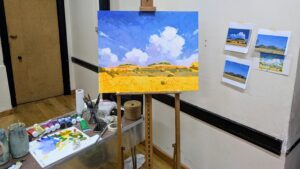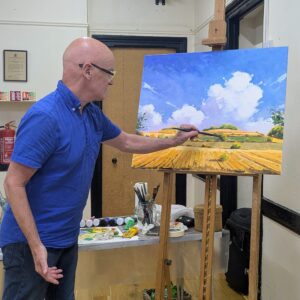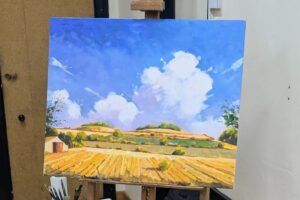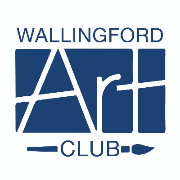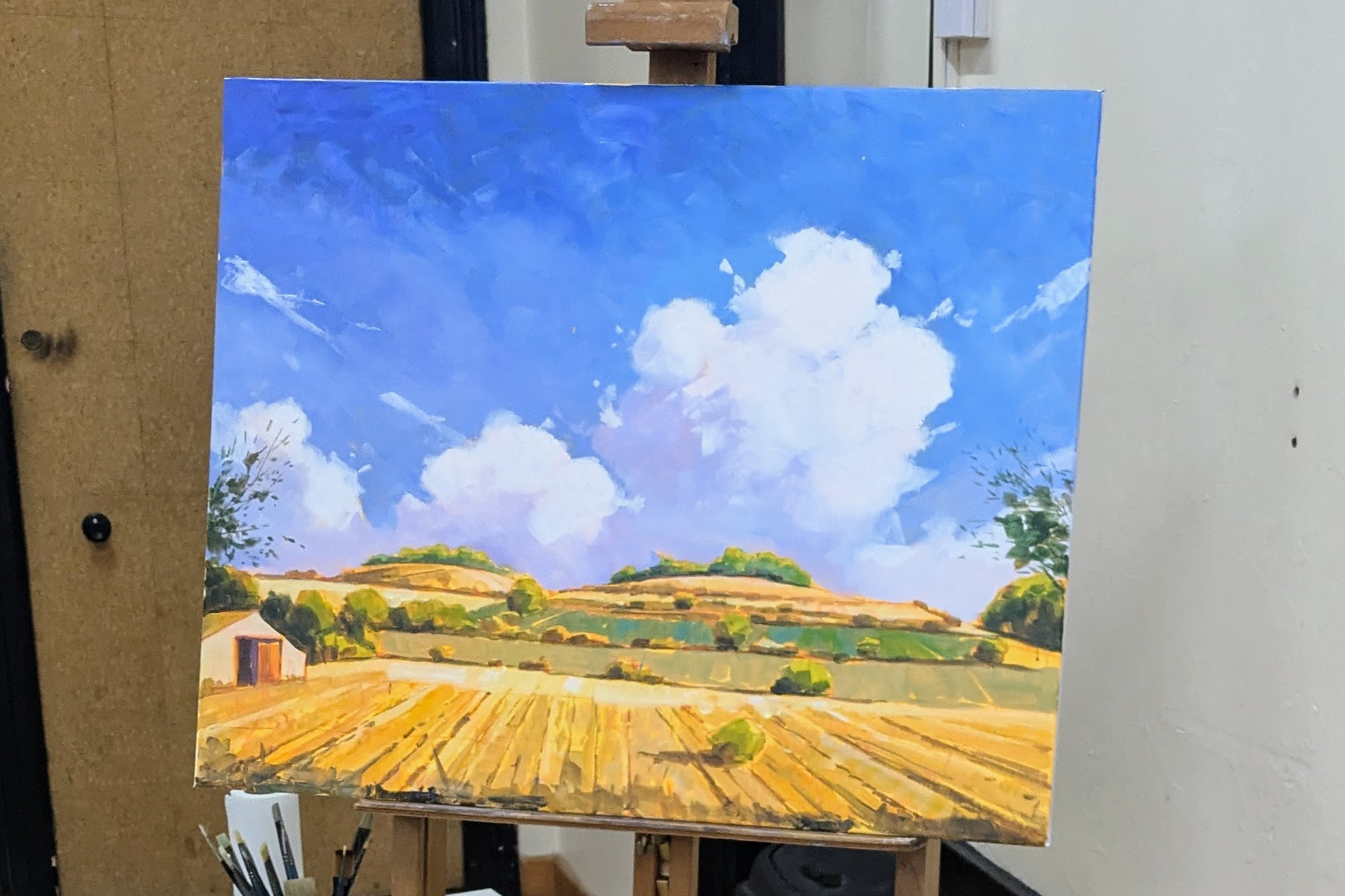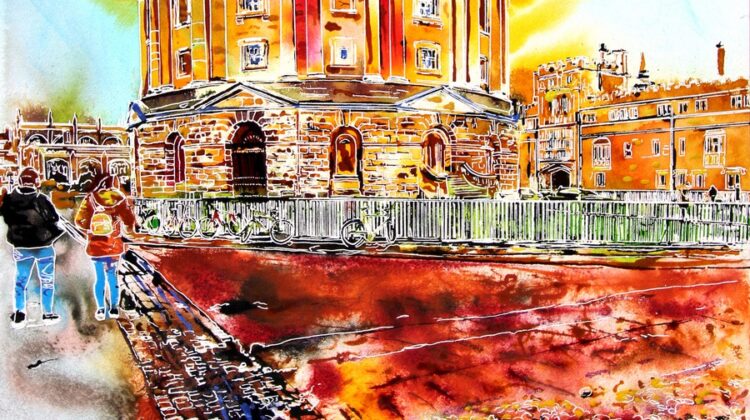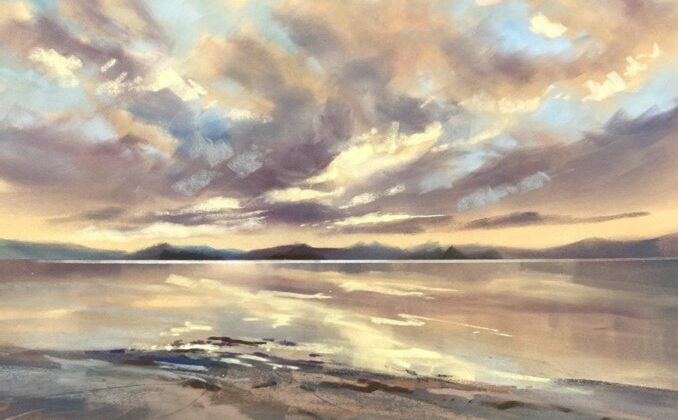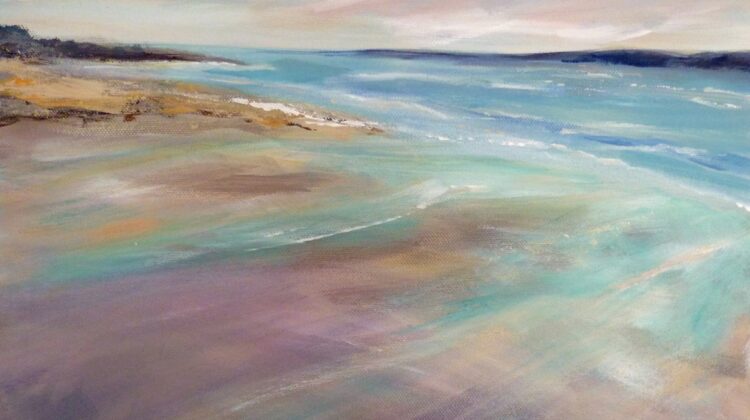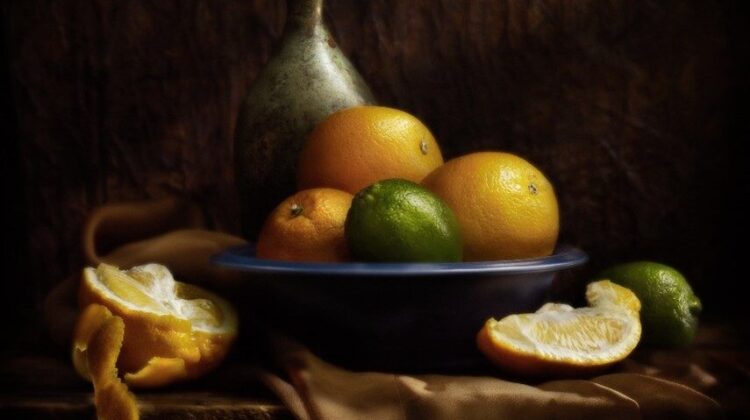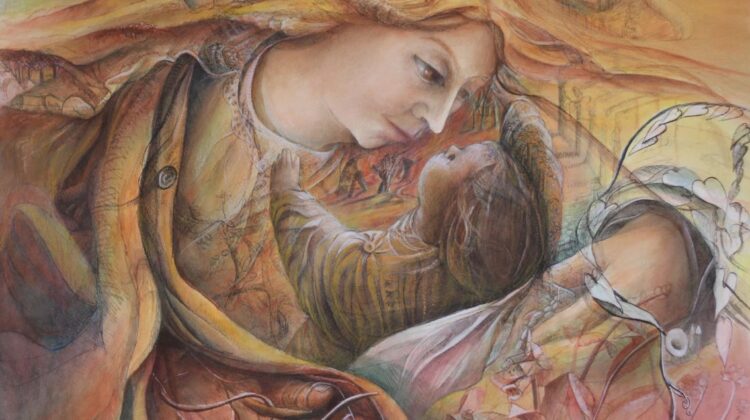On Tuesday 16 September, artist Mark Wood demonstrated his lively, expressive style, creating a landscape of Wittenham Clumps in acrylics.
Mark worked from three separate photos he took, combining elements of each and adding a few that weren’t in the photos. He uses student quality acrylics and basic stretched frame canvases, but good quality brushes and framing. He uses 1 inch square tip brushes, moving to slightly smaller ones for details. This is deliberate, so he doesn’t get into too much detail. Instead, he uses broad, loose brushstrokes, criss-crossing to create feathery edges, rather than traditional blending.
He started with a sketched-out composition, using burnt umber on a brighter cadmium orange and lemon yellow background. Working on the sky, he moved quickly from the top left to right, and top down in cerulean, and ultramarine blue, adding white to lighten it on the right where his light source was and on top of the Clumps. He added in clouds using white at the top with feathered edges and a few wispy contrails, and blue grey (using violet not black) at the bases. He was happy to let the yellow base show through a bit in places where the sun source was the strongest.
After that, he moved onto blocking in colours and basic shapes for the landscape part, working top down with a smaller 3/4 inch square tip brush. The tops of the Clumps were the lightest colour – palest cadmium yellow and white. He added in darker fields and features like the ditches under the clumps with a yellow ochre/burnt umber mix. He uses deliberate dabbing strokes on the vertical to create downwards, sloping movement. He describes it as “letting his brush wander to create a woolly, impressionistic effect”.
Mixing sap green with yellow ochre he started on the green field tiers, varying the mix to lay different greens next to one another for the patchwork effect. He added sap green and cerulean for the bottoms of bushes and tree shapes, again, quite indistinct and woolly. He lightened this mix for the tops of those features and let some of the yellow base show through. He added two edges of tree boughs and leaves in 2 or 3 various dabs of green – just a suggestion of leaves and nothing too detailed. These weren’t in the photos but helped frame the composition.
He added more sap green, ochre and white with vertical brush strokes to lighten the foreground of ploughed fields, highlighting the perspective lines to show the slope and vanishing point, which he had created at the bottom centre between the Clumps. He made sure to break these lines up, so they weren’t too regular and strident. At the very foot of the painting he added a shadow effect in sap green and burnt umber.
He went back into the tiers, adding layers of colour on the field areas and said he would usually work more on that at home. He likes to sometimes break the rule of the palest thing being the furthest away, and added paler elements in the foreground to add interest and lead the eye into the painting.
He added in a tractor shed on the left (enlarging it for interest from the photo) with a white front, and a red oxide (rusty) door ajar. He worked on the bases of hedgerows, adding darker tints throughout to ground them.
When asked how he knows he has finished, he says he stands back, looks around the painting carefully and if after 30-45 seconds of scanning, he can’t find anything that feels wrong, it’s generally done! Looking at his painting he said he would probably finish off by blending the top left area of sky better, add more white to the clouds to add movement and tighten up the bushes and hedgerows. He said that afterwards he may add grasses and his “trademark” cow parsley in the foreground to give perspective and further interest.
View more of Mark’s work here and also by visiting his Instagram page (@markwoodartist) here.
